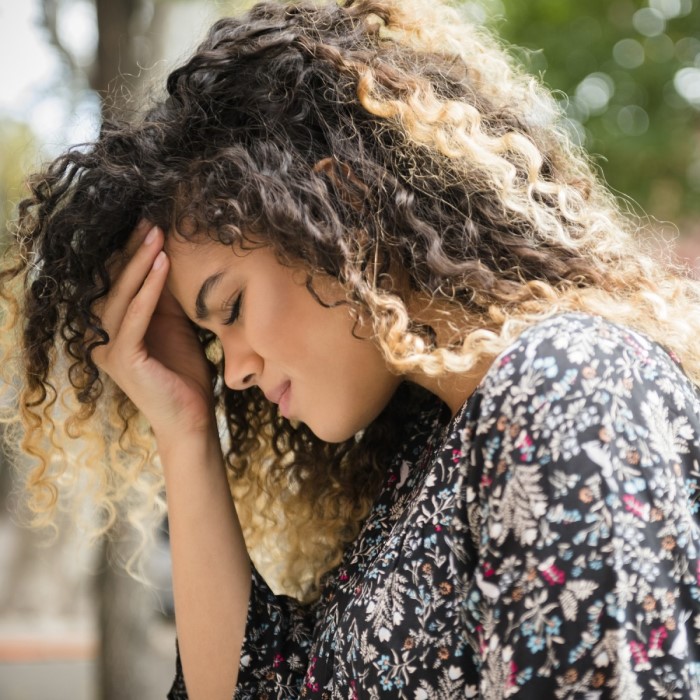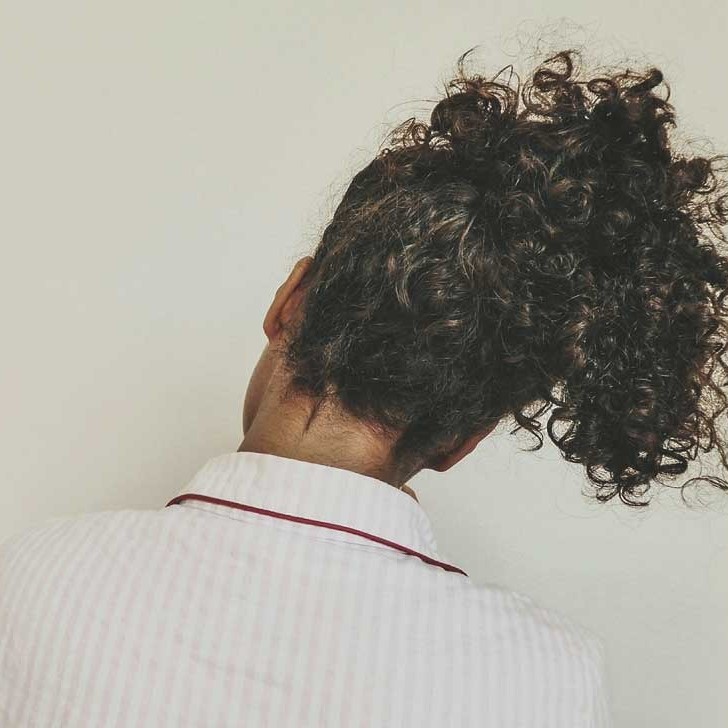
Can Long Hair Cause Headaches? Tips for Managing Pain
Introduction: Can Long Hair Cause Headaches?
The question, “can long hair cause headaches?” often arises among individuals with long hair, especially in cultures that celebrate luscious locks. While hair is often admired for its aesthetic appeal, it can also create discomfort for many long-haired individuals. This discomfort may manifest as headaches, prompting concerns over the relationship between hair length, styling choices, and head pain. This article will delve into the various factors linking long hair with headaches and offer practical tips for managing and alleviating this discomfort effectively.

Understanding the Relationship Between Hair and Headaches
To accurately explore the connection between long hair and headaches, several mechanisms must be considered. The relationship is multifaceted and involves various physiological and behavioral factors.
Weight and Tension
- Physical Strain: One primary reason some may experience headaches is due to the weight of long hair, particularly when it is worn in tight styles. Hair itself can be quite heavy, and when gathered in a ponytail or bun, it creates strain on the scalp.
- Tension-Induced Pain: The tension caused by pulling hairstyles can lead to muscle contractions in the scalp and neck. This tension may trigger a tension-type headache, which is one of the most common forms of headaches experienced by individuals.
Scalp Sensitivity
Individual Sensitivity
- Variability in Sensitivity: Each person’s scalp can exhibit different levels of sensitivity due to factors such as genetics, skin type, and overall health. This means that what feels comfortable for one individual may be uncomfortable or even painful for another.
- Effects of Hairstyling: For individuals with sensitive skin or scalp conditions, certain hairstyles can significantly exacerbate discomfort. Styles that pull tightly on the hair may lead to irritation, redness, or even inflammation of the scalp.
- Common Problematic Hairstyles: Tight ponytails, buns, and braids are popular styles but may not be suitable for everyone. They can create excessive tension that affects not just the hair but also the underlying skin, leading to discomfort and potentially long-term scalp issues.
- Importance of Listening to Your Body: It’s crucial for individuals to pay attention to their scalp’s response to different hairstyles. If a particular style consistently causes discomfort, it may be beneficial to explore alternative styling options that minimize pressure on the scalp.
Raised Nerve Sensitivity
- Nerve Endings in the Scalp: The human scalp is densely packed with nerve endings that are highly sensitive to touch, pressure, and pain. This abundance of nerve endings means that the scalp is particularly reactive to external stimuli.
- Impact of Tight Hairstyles: Wearing hairstyles that excessively tighten the hair, such as tight ponytails or braids, puts unwanted pressure on the scalp. The resulting tension can activate the sensitive nerve endings, leading to sensations of pain or discomfort.
- Potential for Headaches: When these nerve endings are stimulated repeatedly due to tight hairstyles, it may result in tension headaches. The pain can radiate across the head, making it difficult to focus or engage in daily activities comfortably.
- Recognizing Pain Signals: Individuals should be aware of the signals their scalp is sending. If frequent pain occurs with certain hairstyles, it may be advisable to switch to looser styles or incorporate breaks to allow the scalp to recover, reducing the risk of chronic pain and headaches.
Additional Factors Contributing to Headaches
Can long hair cause headaches? Headaches can stem from multiple causes, and it’s crucial to recognize that long hair is just one variable. Several lifestyle and environmental factors can also contribute significantly to headache onset.
Stress and Psychological Factors
- Connection Between Stress and Head Pain: Psychological stress often manifests physically in many individuals. Increased stress levels from work, personal life, or other pressures can lead to muscle tension, particularly in the neck and shoulders, which can trigger headaches.
- Impact of Self-Image: For some, dissatisfaction with their hair or anxiety about appearance can inadvertently lead to increased tension in the body, contributing to headaches.
Poor Posture
- Posture and Headaches: Individuals with long hair might inadvertently adopt poor posture to ensure their hair is not in the way. Poor posture while working at a desk, or even sitting on public transport, can lead to tension headaches.
- Ergonomics Matter: Maintaining a comfortable ergonomic position reduces the risk of inducing headaches due to neck and back strain.
Environmental Factors
- Dehydration: Insufficient fluid intake can lead to dehydration headaches. Those with long hair may spend so much time managing their hair that they forget to hydrate, worsening headache risks.
- Nutrition: Poor nutritional choices or erratic eating patterns may contribute to headaches. Balanced meals and regular eating habits can play a significant role in headache prevention.
Recognizing the Different Types of Headaches
A clear understanding of headaches can help individuals identify and manage them more effectively. Headaches can be broadly classified into several types:
- Tension Headaches: Often linked to muscle tension in the neck and scalp, these headaches are characterized by a dull, aching sensation that can be provoked by stress or poor posture.
- Migraine Headaches: Migraines are more severe than tension headaches and may be accompanied by nausea, sensitivity to light and sound, and throbbing pain on one side of the head. Hair length can sometimes aggravate existing migraine issues, but it is not a direct cause.
- Cervicogenic Headaches: These headaches stem from neck issues and may be triggered by muscle tension or stress induced by improper head positioning or aggravating factors like long hair.
Tips for Managing Pain Associated with Long Hair
Can long hair cause headaches? If you experience headaches related to long hair, there are several effective strategies you can implement to alleviate discomfort:
1. Adopt Gentle Hair Styling Techniques
- Choose Looser Hairstyles: Opt for hairstyles that do not pull excessively on the hair or scalp. Loose ponytails, braids, or wearing hair down can help minimize tension.
- Style Variation: A variety of hairstyles can help reduce strain on specific areas of the scalp. Alternating styles can prevent prolonged tension in one area.
2. Use Proper Hair Accessories
- Soft Hair Ties: Use fabric-covered hair ties or soft scrunchies instead of rubber bands. These options create less tension and friction on the hair and scalp.
- Avoid Heavy Hair Accessories: Heavy clips or accessories can prompt additional strain. Opt for lightweight accessories when styling hair.
3. Regularly Change Hairstyles
- Frequent Hairstyle Changes: This practice not only prevents ongoing tension in specific areas but also gives the hair and scalp a break from tighter styles.
- Experiment with Styles: Explore different hairstyles that may be more comfortable while still meeting personal style preferences.
4. Engage in Scalp Care and Relaxation Techniques
- Scalp Massage: Regular scalp massages can alleviate muscle tension and improve circulation. Using gentle pressure can promote relaxation and reduce headaches.
- Breathing Exercises: Incorporate mindfulness practices into daily routines. Techniques such as deep breathing can help manage stress levels and reduce the likelihood of headache onset.
FAQs About Long Hair and Headaches
Why Do I Get Headaches When My Hair is Long?
Headaches may occur due to tension created by the weight of long hair or the style in which it is worn. Tight hairstyles can lead to strain on the scalp and neck muscles, resulting in pain.
Can Cutting Hair Reduce Headaches?
Yes, cutting hair may potentially reduce headaches for individuals who frequently wear tight hairstyles. Shorter hair may create less weight and tension on the scalp, leading to decreased discomfort.
What Are the Side Effects of Having Long Hair?
Aside from headaches, potential side effects of long hair include increased tangling, hair breakage, and the potential for scalp irritation or discomfort, particularly with tight hairstyles.
Does Long Hair Affect Brain Function?
No, long hair does not affect brain function. However, excessive tension and pain caused by hairstyles can lead to distractions that may negatively influence cognitive abilities, particularly during tasks requiring focus.
Conclusion: Managing Headaches and Celebrating Long Hair
In conclusion, the question can long hair cause headaches? can be approached with understanding and context. While long hair can contribute to tension headaches, other lifestyle factors also play vital roles in headache management. By adopting gentle hair care practices, regularly changing hairstyles, engaging in relaxation techniques, and improving overall lifestyle choices, individuals can effectively manage discomfort linked to long hair.
Remember, headaches don’t have to be a constant companion for those with long hair. By implementing practical tips and adopting a holistic approach to hair and well-being, individuals can enjoy their tresses without the burden of headaches. If headaches persist despite these strategies, seeking advice from a healthcare professional is always advisable to rule out other underlying causes.
By knowing your body and adjusting your routines accordingly, you can maintain both your lovely long hair and your comfort.




